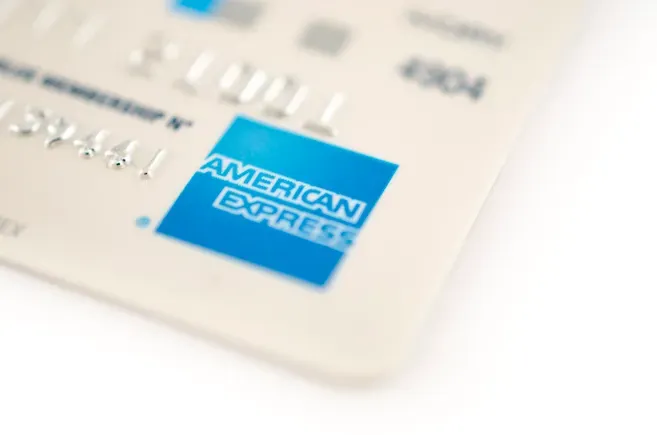Our goal is to give you the tools and confidence you need to improve your finances. Although we receive compensation from our partner lenders, whom we will always identify, all opinions are our own. By refinancing your mortgage, total finance charges may be higher over the life of the loan.
Credible Operations, Inc. NMLS # 1681276, is referred to here as "Credible."
If you’re seeking financial aid to pay for college, your first step is to fill out the Free Application for Federal Student Aid (FAFSA).
Schools use the information from your application to determine whether you qualify for federal and non-federal student aid, like scholarships, grants, and loans.
The FAFSA has no income limits, so you should fill this form out even if you think your family earns too much to qualify for federal aid. You can apply as long as you’re an eligible student.
Here’s a look at the basic FAFSA eligibility requirements, federal aid you could qualify for, and how to apply:
- 2022-23 FAFSA income limits and eligibility
- How to complete the FAFSA
- Types of federal student aid
- Need-based vs. non-need-based financial aid
- Private student loans can fill any funding gaps
2022-23 FAFSA income limits and eligibility
You may have heard the myth that if your family earns a certain amount of money, then you might not be eligible for student aid. But here’s the truth: There’s no FAFSA income limit, and it’s possible to receive financial aid regardless of your family’s income level.
You’re most likely eligible for financial aid if you meet these basic requirements:
- You’re enrolled or have been accepted into an eligible certificate or degree program.
- You’re a U.S. citizen, permanent U.S resident, or eligible noncitizen.
- You have a valid Social Security number (an exception is made for students from the Republic of the Marshall Islands, Federated States of Micronesia, or the Republic of Palau).
- You earned a high school diploma, General Education Development (GED) certificate, or completed an approved homeschooling program.
- You registered for Selective Service if you’re a male between the ages of 18 and 25.
- Multiple lenders compete to get you the best rate
- Get actual rates, not estimated ones
- Finance almost any degree
See Your Rates
Checking rates will not affect your credit
How to complete the FAFSA
You can complete the FAFSA by following these three steps:
- Create an FSA ID. An FSA ID allows you to access the federal financial aid website and the FAFSA application.
You can create an FSA IDe by visiting StudentAid.Gov.
- Gather documents. When you apply for federal aid, you’ll need to provide documentation, such as your Social Security number (resident alien number if you’re not a U.S. citizen), driver’s license number, last two years of federal tax returns and W-2s, investment account information, and bank account information. You’ll need to collect this information from your parents if you’re a dependent student or from your spouse if you’re married.
- Fill out and submit the FAFSA. After you’ve collected the necessary information, use it to fill out the FAFSA online.
Before you sign and submit your FAFSA, review it to make sure the information you provided is accurate.
It’s also important to note that each state and college has its own FAFSA deadline. So, confirm the exact cutoff date with your school’s financial aid office.
Learn More: How to Apply for FAFSA 2022-23: Deadlines, Tips, and FAQs
Types of federal student aid
Although there’s no maximum FAFSA income limit, eligibility for some types of federal aid is based on your financial need.
Here are the types of federal aid you may receive after completing the FAFSA:
Federal work-study program
If you’re an undergraduate or graduate student who demonstrates financial need on the FAFSA, you may qualify for your school’s federal work-study program.
This program offers part-time jobs on and off campus that can help you pay for school. To see if your school participates in this program, contact your school’s financial aid office.
Federal Pell Grants
The Pell Grant is money set aside for undergraduates that typically doesn’t have to be repaid, except for rare circumstances. Eligibility is based on your financial need. For the 2022-23 academic year, the maximum award is $6,895.
But the amount you qualify for depends on several factors, such as your financial need, whether you’re enrolled full- or part-time, and other factors.
Direct Subsidized Loans
Subsidized student loans are available to undergraduate students who demonstrate financial need. While you’re in school, for six months after you graduate, and during eligible deferment periods, the U.S. Department of Education pays the interest that accrues on your student loans.
Direct Unsubsidized Loans
Unsubsidized loans are available to all undergraduates, graduates, and professional students and aren’t based on financial need. Unlike Direct Subsidized Loans, you’ll be responsible for the accrued interest as soon as you receive the loan funds.
Direct PLUS Loans
These loans are available to the parents of undergraduate students and grad students.
You have to get a credit check to qualify, and if you have an adverse credit history your application may be rejected. But you can add an endorser, which is similar to a cosigner, to your loan application to help increase your chances of approval.
Need-based vs. non-need-based financial aid
Need-based financial aid is awarded to those who demonstrate financial need. By contrast, you can qualify for non-need-based financial aid regardless of your household’s income level.
Depending on your unique financial situation, you could be offered a combination of need-based and non-need-based financial aid after submitting the FAFSA.
More Info: EFC: How Your Expected Family Contribution Affects Financial Aid
Cost of attendance
This is an estimate of how much it’ll cost you to attend a school. It includes the cost of tuition, room and board, books, transportation, and other miscellaneous expenses like a personal laptop.
Expected family contribution (EFC)
Your EFC is a number that represents the amount of money your parents can theoretically contribute toward your education expenses.
It’s calculated based on the information you include on your FAFSA. The higher the number, the less need-based financial aid you’re eligible to receive.
If you’re a dependent student and your family’s household income is $27,000 or less, your EFC is zero. Your EFC is also zero if you’re an independent student who has a spouse and your household income is $27,000 or less.
For example: Your school’s cost of attendance is $20,000 and the FAFSA results show your expected family contribution, or EFC, is $10,000. This means the maximum need-based aid (like Pell Grants, subsidized loans, and federal work study) you could qualify for would be $10,000.But what if your family can’t actually contribute $10,000 toward your education?
To cover the $10,000 gap, you might have to turn to non-need-based aid, such as unsubsidized federal student loans or private student loans.
Private student loans can fill any funding gaps
After you’ve exhausted all your federal aid options — scholarships, loans, and grants — it may not be enough to cover your education expenses. If that’s the case, consider asking your parents for help.
If paying the EFC isn’t a possibility, consider taking out a private student loan. Private lenders offer these loans, and you can use them to fill any funding gaps.
If you decide to take out a private student loan, compare rates and terms from as many lenders as possible to get the best deal.
The companies in the table below are Credible’s approved partner lenders. Whether you’re the borrower or cosigner, Credible makes it easy to compare rates from multiple private student loan providers without affecting your credit score.
LenderFixed Rates From (APR)Variable Rates From (APR)
Credible Rating Credible lender ratings are evaluated by our editorial team with the help of our loan operations team.
The rating criteria for lenders encompass 78 data points spanning interest rates, loan terms, eligibility requirement transparency, repayment options, fees, discounts, customer service, cosigner options, and more. Read our full methodology. View details 3.15%+ 1.73%+
- Fixed APR: 3.15%+
- Variable APR: 1.73%+
- Min. credit score: 540
- Loan amount: $2,001 to $400,000
- Loan terms (years): 5, 7, 10, 12, 15, 20
- Repayment options: Full deferral, fixed/flat repayment, interest only, academic deferment, military deferment, forbearance, loans discharged upon death or disability
- Fees: None
- Discounts: 0.25% to 1.00% automatic payment discount, 1% cash back graduation reward
- Eligibility: Must be a U.S. citizen or permanent resident or DACA student enrolled at least half-time in a degree-seeking program
- Customer service: Email, phone
- Soft credit check: Yes
- Cosigner release: After 12 on-time principal and interest payments
- Loan servicer: Launch Servicing, LLC
Credible Rating Credible lender ratings are evaluated by our editorial team with the help of our loan operations team. The rating criteria for lenders encompass 78 data points spanning interest rates, loan terms, eligibility requirement transparency, repayment options, fees, discounts, customer service, cosigner options, and more.
Read our full methodology. View details 3.99%+1 2.29%+
- Fixed APR: 3.99%+1
- Variable APR: 2.29%+
- Min. credit score: 720
- Loan amount: $1,000 to $350,000
- Loan terms (years): 5, 10, 15
- Loan types: Any private or federal student loan
- Repayment options: Full deferral, full monthly payment, interest only, immediate repayment, academic deferment, military deferment, forbearance, loans discharged upon death or disability
- Fees: Late fee
- Discounts: Autopay, loyalty
- Eligibility: Available in all 50 states (international students can apply with a creditworthy U.S. citizen or permanent resident cosigner)
- Customer service: Email, phone, chat
- Soft credit check: Yes
- Cosigner release: After 36 months
- Loan servicer: Firstmark Services
Credible Rating Credible lender ratings are evaluated by our editorial team with the help of our loan operations team. The rating criteria for lenders encompass 78 data points spanning interest rates, loan terms, eligibility requirement transparency, repayment options, fees, discounts, customer service, cosigner options, and more. Read our full methodology.
View details 3.22%+2,3
1.29%+2,3
- Fixed APR: 3.22%+2,3
- Variable APR: 1.29%+2,3
- Min. credit score: Does not disclose
- Loan amount: $1,000 up to cost of attendance
- Loan terms (years): 5, 8, 10, 15, 20
- Repayment options: Full deferral, full monthly payment, fixed/flat repayment, interest only, immediate repayment, academic deferment, forbearance, loans discharged upon death or disability
- Fees: Late fee
- Discounts: Autopay
- Eligibility: Must be a U.S. citizen or permanent resident and be making satisfactory academic progress.
- Customer service: Email, phone
- Soft credit check: Yes
- Cosigner release: After 24 months
- Loan servicer: College Ave Servicing LLC
Credible Rating Credible lender ratings are evaluated by our editorial team with the help of our loan operations team. The rating criteria for lenders encompass 78 data points spanning interest rates, loan terms, eligibility requirement transparency, repayment options, fees, discounts, customer service, cosigner options, and more. Read our full methodology. View details 3.65%+ 2.67%+
- Fixed APR: 3.65%+
- Variable APR: 2.67%+
- Min. credit score: Does not disclose
- Loan amount: $1,000 to $99,999 annually ($180,000 aggregate limit)
- Loan terms (years): 7, 10, 15
- Repayment options: Full deferral, immediate repayment, interest-only repayment, flat/full repayment, academic deferment, military deferment, forbearance, loans discharged upon death or disability
- Fees: None
- Discounts: Autopay
- Eligibility: Available to borrowers in all 50 states.
Must be a U.S. citizen or permanent resident.
- Customer service: Phone, email
- Soft credit check: Yes
- Cosigner release: After 36 months
- Loan servicer: American Education Services
- Min. income: Does not disclose
Credible Rating Credible lender ratings are evaluated by our editorial team with the help of our loan operations team. The rating criteria for lenders encompass 78 data points spanning interest rates, loan terms, eligibility requirement transparency, repayment options, fees, discounts, customer service, cosigner options, and more. Read our full methodology. View details 4.52%+7 4.63%+7
- Fixed APR: 4.52%+7
- Variable APR: 4.63%+7
- Min. credit score: 750
- Loan amount: $1,000 to $200,000
- Loan terms (years): 7, 10, 15
- Repayment options: Full deferral, full monthly payment, interest only, immediate repayment, academic deferment, loans discharged upon death or disability
- Fees: Late fee
- Discounts: Autopay
- Eligibility: Must be a U.S. citizen or permanent resident and have a minimum income of $30,000.
- Customer service: Email, phone
- Soft credit check: Yes
- Cosigner release: After 36 months
- Loan servicer: Granite State Management & Resources (GSM&R)
Credible Rating Credible lender ratings are evaluated by our editorial team with the help of our loan operations team.
The rating criteria for lenders encompass 78 data points spanning interest rates, loan terms, eligibility requirement transparency, repayment options, fees, discounts, customer service, cosigner options, and more. Read our full methodology. View details 5.25%+8 2.92%+8
- Fixed APR: 5.25%+8
- Variable APR: 2.92%+8
- Min. credit score: 670
- Loan amount: $1,001 up to cost of attendance
- Loan terms (years): 5, 10, 15
- Repayment options: Full deferral, full monthly payment, interest only, immediate repayment, academic deferment, forbearance
- Fees: Late fee
- Discounts: Autopay, reward for on-time graduation
- Eligibility: Must be an Indiana resident or a U.S. citizen attending an eligible Indiana school
- Customer service: Email, phone, chat
- Soft credit check: Yes
- Cosigner release: After 48 months
- Loan servicer: American Education Services
Credible Rating Credible lender ratings are evaluated by our editorial team with the help of our loan operations team. The rating criteria for lenders encompass 78 data points spanning interest rates, loan terms, eligibility requirement transparency, repayment options, fees, discounts, customer service, cosigner options, and more.
Read our full methodology. View details 4.89%+ N/A
- Fixed APR: 4.89%+
- Variable APR: N/A
- Min. credit score: 670
- Loan amount: $1,500 up to cost of attendance less aid
- Loan terms (years): 10, 15
- Repayment options: Full deferral, interest only, immediate repayment, academic deferral, forbearance
- Fees: None
- Discounts: None
- Eligibility: Must be a U.S. citizen or permanent resident and be making satisfactory academic progress.
- Customer service: Email, phone
- Soft credit check: Yes
- Cosigner release: After 48 months
- Loan servicer: American Education Services (AES)
Credible Rating Credible lender ratings are evaluated by our editorial team with the help of our loan operations team. The rating criteria for lenders encompass 78 data points spanning interest rates, loan terms, eligibility requirement transparency, repayment options, fees, discounts, customer service, cosigner options, and more. Read our full methodology.
View details 3.75% - 13.72% APR9 2.62% - 12.97% APR9
- Fixed APR: 3.75% - 13.72% APR9
- Variable APR: 2.62% - 12.97% APR9
- Min. credit score: Does not disclose
- Loan amount: $1,000 up to cost of attendance
- Loan terms (years): 10 to 15
- Repayment options: Full deferral, fixed/flat repayment, interest only, academic deferment, forbearance, loans discharged upon death or disability
- Fees: Late fee
- Discounts: Autopay
- Eligibility: Must be a U.S. citizen or permanent resident. Also available to non-U.S. citizen students (including DACA students) attending a school located in the U.S. who apply with a qualifying cosigner.
- Customer service: Phone, chat
- Soft credit check: Yes
- Cosigner release: After 12 consecutive on-time payments
- Loan servicer: Sallie Mae
your credit score. 100% free!
Compare Private Loans Now
Trustpilot
Lowest APRs reflect autopay, loyalty, and interest-only repayment discounts where available | 1Citizens Disclosures | 2,3College Ave Disclosures | 7EDvestinU Disclosures | 8INvestEd Disclosures | 9Sallie Mae Disclosures
About the author Jerry BrownJerry Brown is a personal finance writer, owner of the Peerless Money Mentor blog, and a contributor to Credible. He has written for major publications such as Forbes Advisor, Business Insider, and Rocket Mortgage.
Read MoreHome » All » Student Loans » 2022-23 FAFSA Income Limits and Eligibility
Original Article






